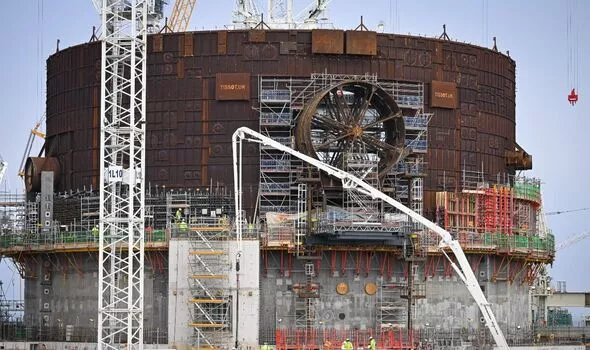The Nuclear Gravy Train Just Keeps Rolling Along
Over the last two decades, as public concerns have grown about climate change some high-profile activists have concluded that more nuclear fission is the only way to combat climate change and many economists see it as a way to keep business-as-usual going. More recently, those concerned about energy shortages have also heeded the siren call from the nuclear leviathan.
However, apart from unsolved problems with radioactive waste, the messy and toxic business of mining uranium, and the dangers of proliferation, there is also the matter of a litany of engineering problems which have led to spiralling costs and continual delivery delays.
For instance, this very day we hear that Hinkley Point C, already way over-budget, may now cost £32.7bn to complete [see Cost of Hinkley Point C nuclear plant could inflate to more than £30bn]. That would be more than double the initial budget estimate of £16bn. George Osborne strongly backed the project, but his own father-in-law, former Thatcher energy minister Lord Howell, described the project as “one of the worst deals ever” for British consumers and industry [see Work to begin on Hinkley Point reactor within weeks after China deal signed]. Around the time when the budget went to £18bn, the EU suggested that the financing charges may be as high as £6.5bn. The Conservative government didn’t talk very much about such charges, since it it is not the sort of thing they would like the taxpayer to know. Such charges are clearly obscene.
The completion date of Hinkley C has been pushed back to September 2028. You would have to be pretty optimistic to bet on that target being hit given all the other failed targets for this type of reactor and EDF’s lamentable track record. In 2008, when support was re-affirmed for Hinkley C (and Sizewell C), they were both supposed to be online by now (and EDF’s boss in 2007 said that HP-C would be ready by 2017).
This is from a Guardian article in 2017:
According to Gérard Magnin, a former EDF director, the French company sees Hinkley as “a way to make the British fund the renaissance of nuclear in France”. He added: “We cannot be sure that in 2060 or 2065, British pensioners, who are currently at school, will not still be paying for the advancement of the nuclear industry in France.”
[see Hinkley Point: the ‘dreadful deal’ behind the world’s most expensive power plant]
As for the earlier Hinkley incarnations, Hinkley Point B was an AGR or Advanced Gas-Cooled Reactor and was delayed in producing electricity by five years by design and engineering problems. It has now shut down (as of August 2022) and is undergoing years of expensive de-fuelling.
Hinkley Point A started construction in 1957. It consisted of two Magnox reactors and suffered significant design and engineering problems; both reactors were shut down permanently in 2000 following safety concerns (though they undeniably produced a considerable amount of electricity during their operating lives). De-fuelling and some building removal will take until 2031, but the reactors won’t be demolished until near the end of the 21st century.
Meanwhile, EDF’s Flamanville 3, an EPR (European Pressurised Reactor) similar to Hinkley Point C, begun in 2007, now more than five times over budget is still not online. [see Flamanville Nuclear Power Plant]
And then, in Finland, there is Olkiluoto 3, another EPR calamity. Billions over budget, more than a decade late coming online, and now offline again because of damage in the feedwater pumps. It is scheduled to come back online next month. This is the second time it has been shut down for repair work since it started producing electricity – not even a year ago. [see Olkiluoto Nuclear Power Plant]
Without massive taxpayer subsidies nuclear is completely uneconomic, but it’s a lovely gravy train if you can get on it. That is almost certainly why there is currently a massive attempt to revive nuclear’s fortunes under the pretence of caring about climate change, but the irony is that free-market capitalism, which most of its boosters adhere to, if rigorously applied, would actually kill nuclear fission dead in the water, so once again it looks like socialism for the C suite and penury for the public.

